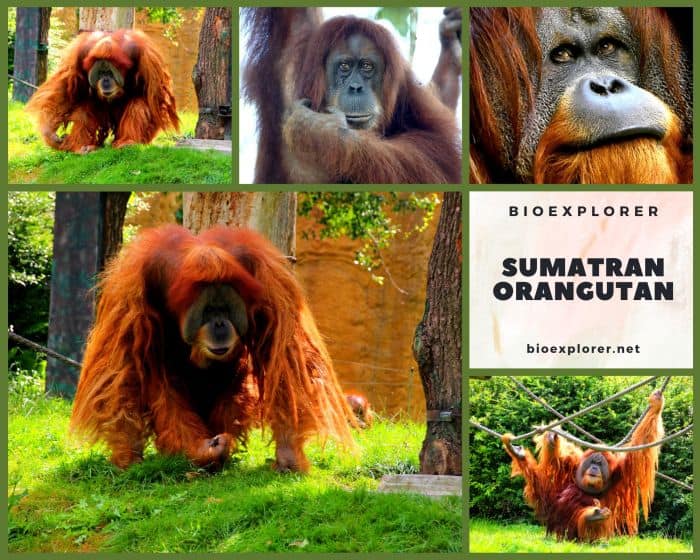
| Animalia | Primates | Hominidae | Pongo | Pongo abelii |
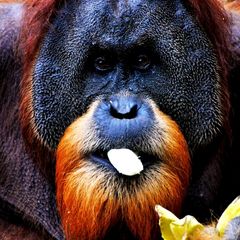

- Common Name: Sumatran Orangutan
- Taxonomy Classification Year: 1827
- Monkey Size: 43 to 54 in (110 to 137 cm)
- Skin Color(s): Orange
- Habitat: Rainforest
- Diet: Omnivorous
- Native Countries: Indonesia
Sumatran Orangutan Distribution
Sumatran Orangutan Characteristics
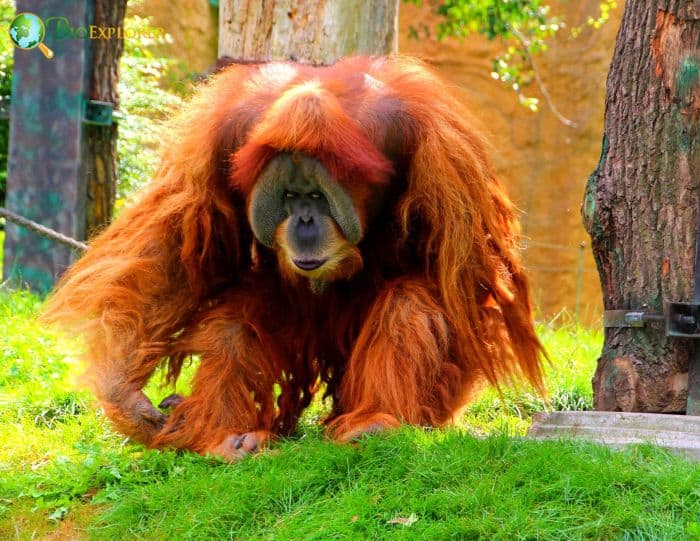
The Sumatran orangutan[1] (Pongo abelii) is one of 3 species of orangutan. This Asian primate is critically endangered and found only on the Indonesian island of North Sumatra.
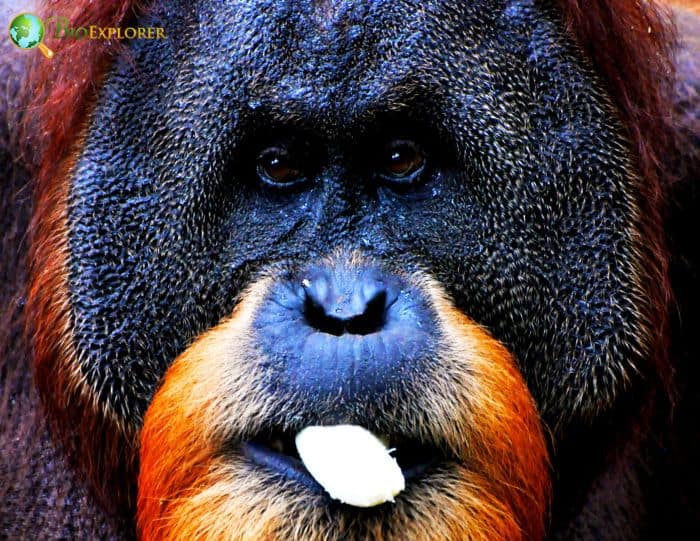
- It is rarer than the Bornean orangutan but more common than the recently identified Tapanuli orangutan, also found in Sumatra. Sumatran orangutans have long orange hair.
- Their faces are somewhat elongated, and both males and females have beards. Males have whiskers and fine hair covering the cheek pouches.
- The forehead is quite broad and slightly arched. The nose is flat with large nostrils, and the jaws and mouth protrude outward.
- They have 32 teeth like humans, but the large canines and central incisors are longer and have a heavier enamel surface.
- The ears are pretty small compared to the size of the head. The eyes are brown and protected by lids and eyelashes. Babies are born with pink face that turns leathery brown as they age.
- Sumatran orangutans have long arms measuring 2 meters in length and long hands and feet.
- Extremely strong, they can easily lift 500 pounds (240 kg), which comes in handy when knocking over mature palms to save hearts for a meal.
- Their finger bones curve inward and are padded with fleshy pads that improve their grip and allow them to support their body weight.
- The fingernails are black, and the feet and hands have grooves inside that are unique to each individual.
- The feet look like hands with a big toe that acts like a thumb. Hands and feet are perfect for moving through trees.
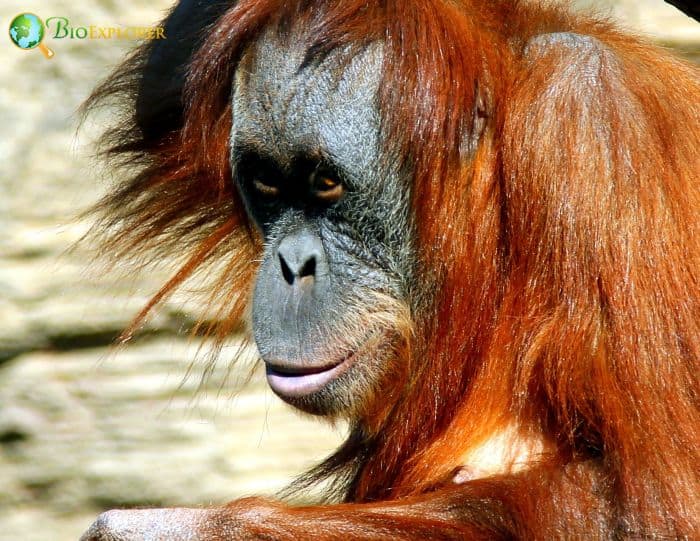
Sumatran Orangutan Facts
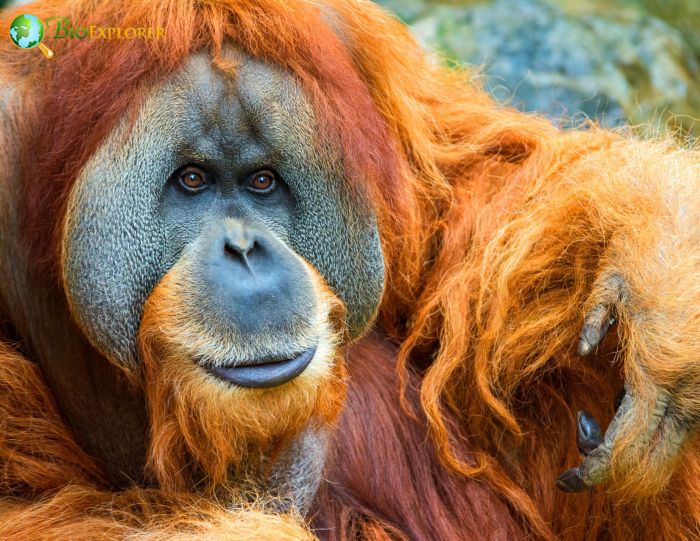
- Their common name is based on two distinct local words, “orang” (“people” or “person“) and “hutan” (“forest“), which derive from Malay and translate to “man of the forest“.
- Dominant male species develop large throat pouches and prominent cheek ridges called bridles, which they retain while dominating their territory. They lose them when they are dethroned.
- Compared to other great apes, Sumatran orangutans tend to be solitary, calm, even-tempered, and deliberate in their actions.
- They sit 20-30m (70 ft) above the ground, tend to blend into the foliage, and are not easy to spot, hence their nickname “elusive ape“.
- Female species stay close to their home territory, while male species travel farther in search of territory to claim.
Suggested Reading: Ape Classification
Cite This Page
APA7MLA8Chicago
BioExplorer.net. (2025, May 28). Sumatran Orangutan. Bio Explorer. https://www.bioexplorer.net/animals/mammals/apes/sumatran-orangutan/.
BioExplorer.net. "Sumatran Orangutan" Bio Explorer, 28 May 2025, https://www.bioexplorer.net/animals/mammals/apes/sumatran-orangutan/.
BioExplorer.net. "Sumatran Orangutan" Bio Explorer, May 28 2025. https://www.bioexplorer.net/animals/mammals/apes/sumatran-orangutan/.











